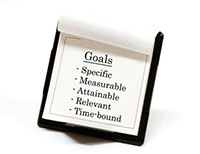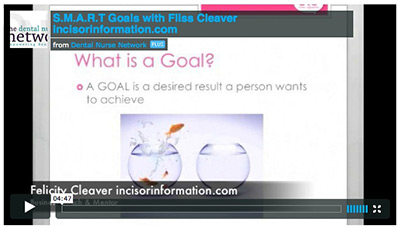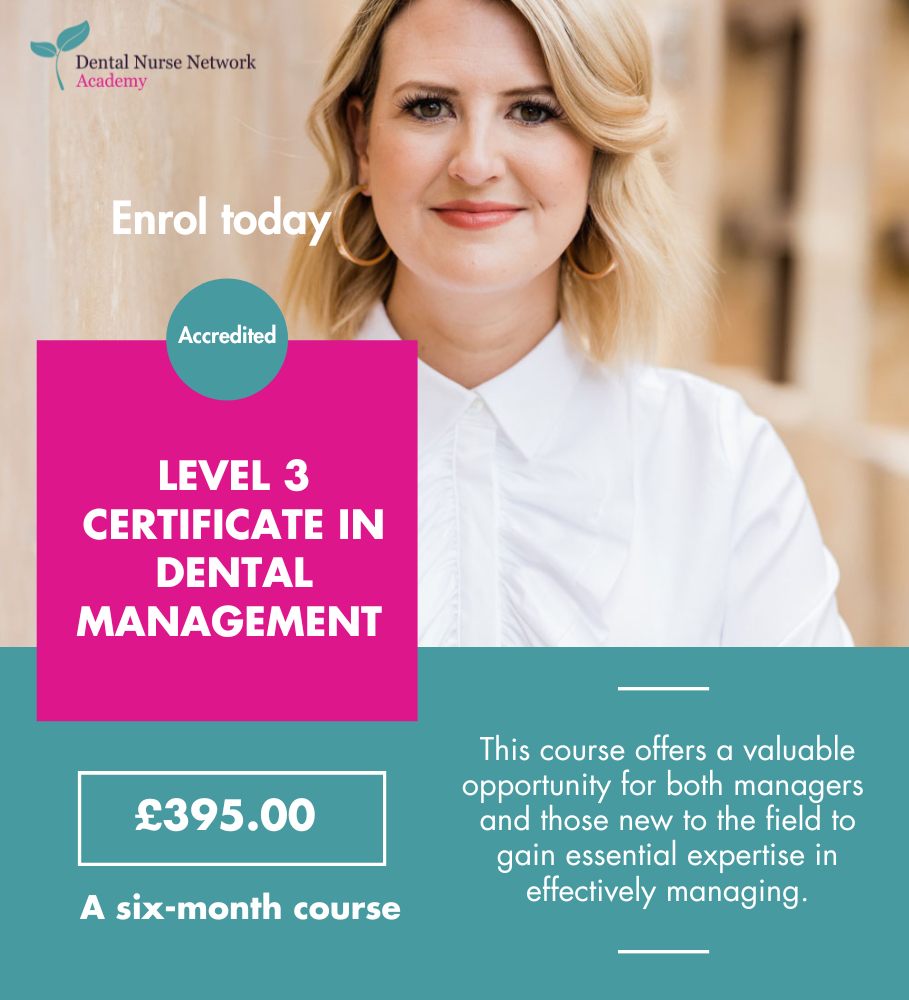 Should you be concerned about planning your career? It is your career, so if you don’t take responsibility who will? It is important to work hard and throw all your energy into your working life but it is also important to consider how you feel about your work? Are you happy? Are you satisfied? Where do you want to go?
Should you be concerned about planning your career? It is your career, so if you don’t take responsibility who will? It is important to work hard and throw all your energy into your working life but it is also important to consider how you feel about your work? Are you happy? Are you satisfied? Where do you want to go?
Working in a dental practice can be exciting, invigorating and rewarding. At the same time it can be very demanding as there is always a lot going on. The dental industry is one of continual learning – things are always changing, especially in medical terms – so it is vital to keep up. A dental nurse’s role has advanced more than ever in recent years, a dental nurse carries out a wide range of tasks. These include looking after patients, patient reassurance, safety precautions, being at the dentist’s side and preparing and sterilising equipment, the list goes on . In addition, of course, all of these tasks must be performed to very high standard. This is why it is so important to take time to reflect on your role, your tasks, your progress and then evaluate how you can develop yourself professionally.
 In recent years, amidst an economic crisis, employment is not always stable. There is undoubtedly less job security. Technical skills are becoming vital. There is a constant demand for dental nurses to upgrade skills. It is therefore up to the individual to identify their position, the next steps in their career development, particularly through broadening experience and skills. The good news is that for dental nurses this is not too difficult. There are many different directions to take and a huge range of ‘extended duties’ which can help with identifying where your strengths lie in the industry and what job possibilities this opens up. It seems an obvious step to prepare and plan your future.
In recent years, amidst an economic crisis, employment is not always stable. There is undoubtedly less job security. Technical skills are becoming vital. There is a constant demand for dental nurses to upgrade skills. It is therefore up to the individual to identify their position, the next steps in their career development, particularly through broadening experience and skills. The good news is that for dental nurses this is not too difficult. There are many different directions to take and a huge range of ‘extended duties’ which can help with identifying where your strengths lie in the industry and what job possibilities this opens up. It seems an obvious step to prepare and plan your future.
Completing and utilising a Personal Development Plan (PDP) effectively can help support you on your road to progression and what you really want to achieve. It can give you, as an individual, structure, focusing on quality and accountability, which are significant considerations in terms of future goals not only for the individual, but for a dental practice too. A PDP is a method for identifying your developmental needs and devising the best solutions to achieve this development.
A PDP is part of Clinical Governance – the government requires that all NHS clinicians have and use a PDP. A PDP involves updating, revisiting, stimulating ideas, identifying strengths and weaknesses, and prioritising and planning for your future career.
Many people find the idea of reflecting, evaluating and making plans daunting and overwhelming. A word of advice, go through the process slowly and break it down. It will hugely benefit you if you make and stick to an effective PDP.
A PDP in other words is a ‘plan.’ This ‘plan’ demonstrates commitment to your professional development. It can be useful to break down what you need to learn and what you want to learn. This will encourage you to focus on what you want to achieve through this learning and it will force you to think specifically about how you are going to get to that point. You can create your own learning objectives and your PDP will therefore stands as a evidence of your learning and objectives.
A Personal Development Plan demonstrates to the General Dental Council (GDC) that you are committed to lifelong learning in your professional field. It also provides guidance and goals, in addition, assisting with continual professional development (CPD). A PDP has been defined as ‘a process by which we identify our educational needs, set ourselves some objectives in relation to these, undertake our educational activities and produce evidence that you have learned something useful.’ (Rughani, Franklin & Dickson. Personal Development Plans for Dentists. The new approach to continuing professional development. Oxon: Radcliffe Medical Press, 2003, p. 27)
Since August 2008, it was determined by the GDC that Dental Care Professionals (DCPs) have to complete 50 hours of verifiable CPD (in recommended subject areas) and 100 hours non-verifiable in a five-year cycle. Furthermore, it is now law for dental professionals to take part in CPD. The GDC introduced the CPD scheme to ensure patients the best possible treatment. CPD was put in place to ensure patients receive high quality care.
 Verifiable CPD involves sessions, study days and quizzes, etc. With verifiable CPD you are given the opportunity to give feedback to the CPD supplier and are also presented with a certificate. Non-verifiable incorporates reading journals and articles – thiscannot be independently checked but must be recorded, dated and sourced. DCPs must complete their CPD to maintain their registration. The GDC stipulates that a DCP should have a PDP to identify and plan their CPD requirements. This is to achieve maximum benefit from CPD activities.
Verifiable CPD involves sessions, study days and quizzes, etc. With verifiable CPD you are given the opportunity to give feedback to the CPD supplier and are also presented with a certificate. Non-verifiable incorporates reading journals and articles – thiscannot be independently checked but must be recorded, dated and sourced. DCPs must complete their CPD to maintain their registration. The GDC stipulates that a DCP should have a PDP to identify and plan their CPD requirements. This is to achieve maximum benefit from CPD activities.
A PDP involves identifying your learning needs, it incorporates CPD activity and aims to improve your professional status. This means you can take control of your own learning and future career. The GDC require that you keep CPD records for five-years and you may be selected for audit. The GDC have declared, ‘As a registered dental professional you have a duty to keep our skills and knowledge up to date so you can give patients the best possible treatment and care. Continuing professional development (CPD) is compulsory, but ideally it should just set out a formal framework for what you are already doing.’ (GDC) A PDP is essential for an individual’s professional portfolio as well as requested by the GDC. A PDP will also be useful for job interviews.
Some practical advice
Before you start your PDP it is a good idea to make a spider diagram including the following topics: Learning and educational needs: how you will address these? Outcomes and Evidence: scribble down ideas and many of your first thoughts which surface when thinking about your career and job role. You can refer back to this. It will be useful as a draft and template.
Whilst drawing on your spider diagram it may be useful to reflect on the following:
• What are you good at?
• What could you do better?
• What do you think you could change to benefit your practice?
• Do any patients make you feel uncomfortable or uneasy?
• Has a patient asked you something you don’t know the answer to?
• Have you ever needed to look anything up?
• What issues have been raised in your appraisals?
• Does your practice run effectively? The best it can?
• What doesn’t run well in practice?
• Have there been any significant events in practice?
• What are the practice development priorities? How do they affect you?
You might prefer to use a ‘Reflective Model’ which helps you to reflect and focus on something specific using the certain subtitles: Description: what happened? Feelings: what did you think or feel? Evaluation: was it good or bad? Analysis: what sense have you made of today? Conclusions: what else could have been done? Action plan: what will you do now? Gibbs (1988) stated that a Reflective Model will ‘help you reflect and focus on your thoughts today'.
The next stage is to begin your PDP. The key is to construct a simple, clear PDP and this can be achieved through a step by step approach.
![]() Step 1
Step 1
SWOT analysis- open a word document, google document or pages document (or DOWNLOAD one here) and title it ‘SWOT analysis’. SWOT stands for STRENGHS (for example, team leader, update with CPD, good communication skills, good with elderly patients. This is an opportunity to sell yourself), WEAKNESSES (difficultly finding time for CPD or completing CPD, not recording CPD, lack of knowledge in specific areas. Address your weaknesses to help you overcome them), OPPORTUNITIES (extended duties, supportive boss and colleagues, taking charge of PDP) and THREATS (new job, limited time, overwhelmed with learning new skills, poor communication with team). This gives you a chance to sit down and analyse your current situation. This can help you to work out your long term goals. You may want to do this with a colleague which may help.
![]() Step 2
Step 2
The next part is to open a word document (or DOWNLOAD one here)and title it SMARTER GOAL 1, you may have more than one so the following pages you would label SMARTER GOAL 2, SMARTER GOAL 3, etc. This is where you can consider your goals, evaluate them, really think about them and make them smarter. You can identify your goals through appraisal, self-awareness, audit and reflection, etc. An occasion may occur when a patient asks you a question and you do not know the answer to it e.g ’ What are implants made of?' This realisation that you are not sure what to respond might highlight that you need to develop your knowledge on implants. Another example of goal may be to complete a certain number of CPD courses. In you PDP you should specifically state which CPD courses you want to undertake. You do not have to write 50 at once, you can build your PDP gradually.
Once you have determined a goal, you then make it smarter by addressing the following questions:
![]() SPECIFIC: is the goal specific enough?
SPECIFIC: is the goal specific enough?![]() MEASURABLE: can success be measured?
MEASURABLE: can success be measured?![]() ACHIEVABLE: is it achievable?
ACHIEVABLE: is it achievable?![]() RELEVANT: is the goal relevant to your working practice?
RELEVANT: is the goal relevant to your working practice?![]() TIMED: is the goal on-going or timed?
TIMED: is the goal on-going or timed? EXCITING: is the goal interesting enough to motivate you?
EXCITING: is the goal interesting enough to motivate you?
RECORDED: will this be logged as verifiable CPD or non verifiable? Or is it concerned with something else.
It is important to break your goals down. How will you achieve your goal? What will mark your success? What resources will you need? Set a date to complete the goal Too. You make these decisions and be as flexible as you want working towards what you want to achieve.
![]() Step 3
Step 3
The next section of your PDP needs to be a record of your CPD (DOWNLOAD Record sheet here). This includes both verifiable and non-verifiable CPD. This is just a case of compiling certificates, recording dates and sources.
![]() Step 4
Step 4
Now you need to decide on how you are going to present you PDP and formulate your PDP portfolio. This can also include: your CV, references, appraisals.
Some practices have undergone annual appraisals and PDPs are involved in the final part of these appraisals. PDPs set out some of your planned, future learning. In this case, your appraiser will likely sign your PDP as satisfactory. Changes or suggestions may be given. The following year's appraisal will involve a review of the previous year's PDP.
The important thing to remember is that you must update your PDP constantly. You can change, alter and modify your goals and then you can add new needs as the year progresses. It is all about self-awareness and figuring out where your strengths and weaknesses lie. It is personal, so it is yours to do and decide what you want to do with. Its main aim is to help with your own development and this further benefits the practice and patients.


